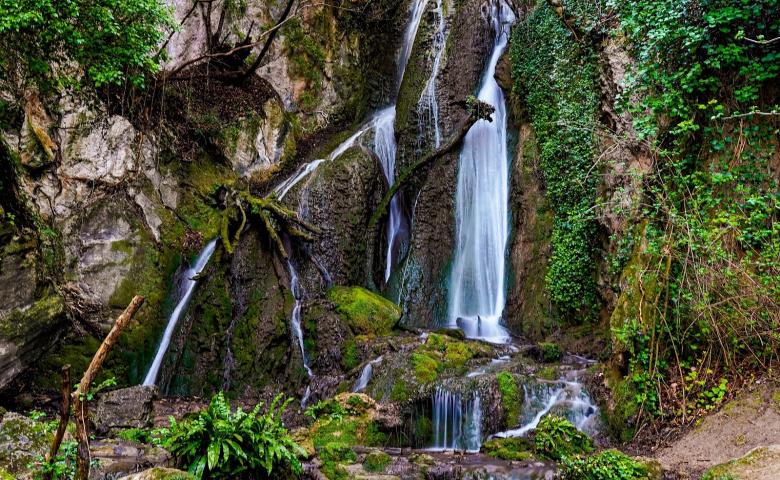John the Evangelist on a background painted with tapestry supported by Angels, an artwork signed by Ugolino di Gisberto and dating back to the 16th century; on the internal side of the second pillar, within a shrine, there is a Madonna and Child in multicolour stucco of the late 15th century and a tombstone with an image of a reclining figure.
St. Rocco and Angels are represented on the third pillar, under the arch on the right side.
In the central aisle nearby the door there is a St. Jerome attributed to Pierantoni Mezzastris; a Maddona with Child among Angels, attributed to Lattanzio di Niccolo, is depicted on the first pillar; there are also frescoes of the 14th century representing Saints Peter and Paul, a Madonna with Breastfeeding Child, the Annunciation; in the second pillar on the left, inside a niche there is a multicolour Papier-mâché bust of the 16th century, representing Jesus with tied hands and the crown of thorns.
The right aisle has in its niches pictures of Crucifixions; under the first arch there is a Christ carrying the cross attributed to Niccolò Alunno; on the second pillar St. Lucia and St. Amico, by Pierantonio Mezzastris; under the second arch a St. Peter martyr attributable to Niccolò Alunno. On the alter nearby are frescoes showing St. Catherine of Alexandria and St. Jerome by Pierantonio Mezzastris.
A chapel with two nice windows on the right wall opens up in the last part of the left aisle: in the conch of one of them there is a fresco representing the Archangel Gabriel and Disma (the good thief) of the second half of the 12th century; in the bottom niche there is a Blessing Christ between St. Peter and St. Paul and a decoration that seems to refer to an oriental tapestry, and a Romanesque wooden statue of the Madonna is attributable to the 12th century.
Curiosity
Until the 13th century the church was ouside the town´s walls and was called foris portam (outside the gate); with the building of new town walls at the end of the 13th century, the building was enclosed between the two sets of town walls and took the name of infra portas.






























.jpg/9c821287-b9ac-2175-7491-002f9032c42f?width=780)
.jpeg/26712e88-9665-3ae2-a85e-3bd2b38b8a93?width=780)

